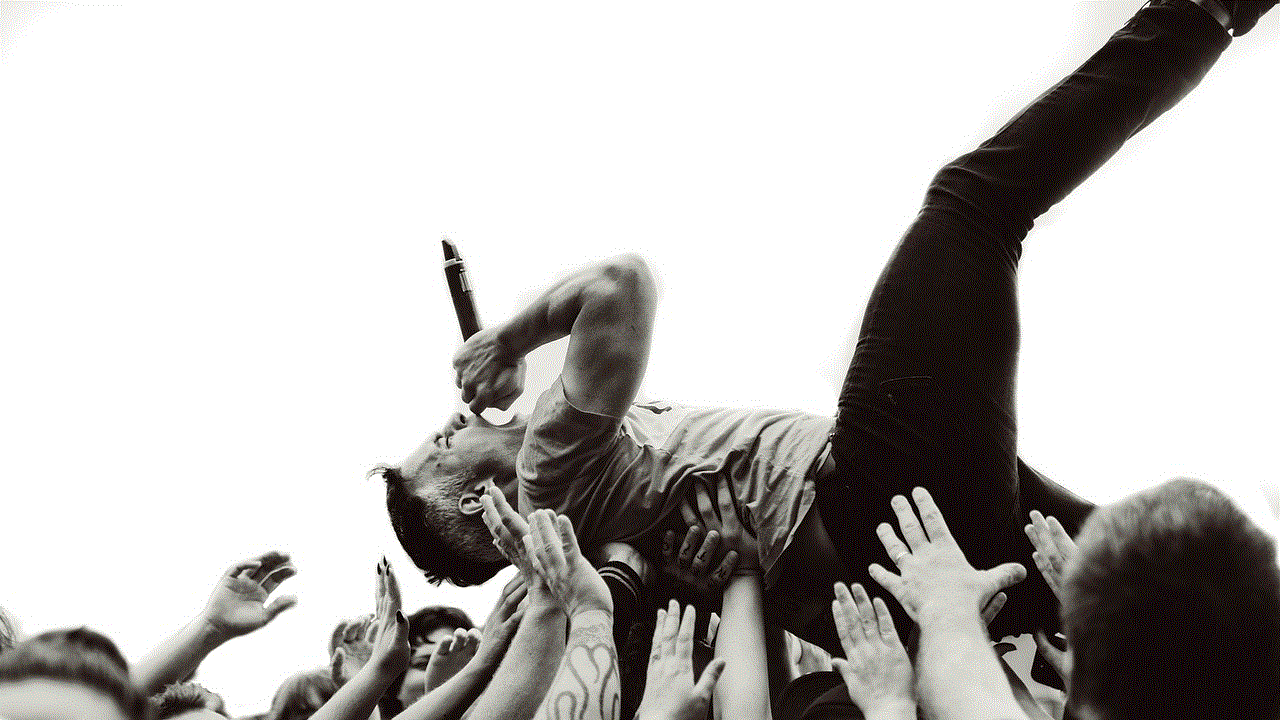pos meaning tiktok
TikTok is a social media platform that has taken the world by storm. With over 1 billion active users worldwide, it has become a cultural phenomenon. At the heart of this app is its unique feature called “pos,” which stands for “point of sale.” In this article, we will explore the meaning of pos in TikTok and its impact on the platform’s success.
Pos, in simple terms, is a feature that allows users to buy products directly from within the app. It is a game-changer for both businesses and content creators on TikTok. With this feature, businesses can reach a wider audience and generate more sales, while content creators can monetize their videos and earn money from their content. This feature has revolutionized the way businesses and creators interact with their audience on TikTok.
The pos feature was first introduced in TikTok’s Chinese counterpart, Douyin, in 2019. It was later rolled out to the global version of the app in 2020. Since then, it has become a key element in the platform’s monetization strategy. The pos feature works by allowing businesses to create shoppable ads that appear on users’ For You page, the main feed on TikTok. These ads are labeled with a “pos” tag, indicating that the product is available for purchase.
When a user clicks on a pos ad, they are taken to the product page within the app, where they can learn more about the product and make a purchase. This seamless shopping experience has made it easier for businesses to convert views into sales. It has also made it easier for users to discover and buy products without leaving the app, making the overall shopping experience more convenient.
But why has pos been so successful on TikTok? One of the main reasons is the platform’s highly engaged audience. TikTok users spend an average of 52 minutes per day on the app, with 90% of them accessing it multiple times a day. This high engagement rate means that pos ads have a higher chance of being viewed and clicked on, leading to more sales for businesses.
Moreover, TikTok’s algorithm plays a significant role in the success of pos. The app’s algorithm is designed to show users content that is most relevant to them, based on their interests and previous interactions on the app. This means that pos ads are shown to users who are more likely to be interested in the products being advertised, increasing the chances of conversion.
The pos feature has also opened up a new revenue stream for content creators on TikTok. In the past, creators relied on brand partnerships and sponsorships to earn money from their videos. But with pos, they can now earn a commission every time someone makes a purchase through their shoppable videos. This has given rise to a new breed of creators called “TikTokpreneurs” who create content specifically with the intention of promoting products and earning money through pos.
The success of pos on TikTok has not gone unnoticed by its competitors. Other social media platforms like Instagram and Snapchat have also started to incorporate similar features. However, TikTok’s unique algorithm and highly engaged audience give it an edge over its competitors.
The impact of pos on TikTok’s success can also be seen in the numbers. In 2020, the app’s parent company, ByteDance, reported a revenue of $37 billion, with a significant portion of it coming from advertising and e-commerce. This represents a 111% increase from the previous year, highlighting the effectiveness of pos in driving revenue for the company.
The pos feature has also been a game-changer for small businesses. In the past, these businesses struggled to compete with larger brands on social media due to limited resources. But with pos on TikTok, small businesses can now reach a wider audience and compete on a level playing field. This has led to the rise of many successful small businesses on the app, with some even gaining millions of followers and sales through TikTok.
The success of pos on TikTok has not been without its challenges. One of the main concerns is the potential for fraud and scamming. As with any online shopping platform, there is always a risk of fraudulent activity. To combat this, TikTok has implemented strict guidelines and measures to ensure that all pos ads are legitimate and that users are protected from fraudulent activities.
Another concern is the potential for oversaturation of pos ads on the app. With the rise of TikTokpreneurs and businesses leveraging the pos feature, there is a risk of users becoming overwhelmed with shoppable content. To address this, TikTok has limited the number of pos ads that can appear on a user’s For You page, ensuring that the app’s content remains diverse and engaging.
In conclusion, the pos feature has been a game-changer for TikTok. It has transformed the app from a purely entertainment platform to a hybrid of entertainment and e-commerce. The success of pos on TikTok can be attributed to the app’s highly engaged audience, unique algorithm, and the convenience it provides for both businesses and creators. As the app continues to grow, we can expect to see even more innovative features that will further enhance the shopping experience on TikTok.
can i have messenger without facebook
In today’s digital age, social media has become an integral part of our daily lives. Among the various social media platforms, Facebook stands out as the most popular and widely used one. With over 2.85 billion active users, Facebook has become the go-to platform for connecting with friends and family, sharing updates, and even conducting business. However, with the rise of privacy concerns and data breaches, many people have started questioning the need for a Facebook account. One of the most frequently asked questions is, “Can I have Messenger without Facebook?”
The short answer is yes, you can have Messenger without Facebook. However, the long answer is a bit more complicated. To fully understand the relationship between Messenger and Facebook, it is essential to delve into their history and how they are connected.
Messenger, formerly known as Facebook Messenger, was first introduced in 2011 as a messaging service within the Facebook app itself. It allowed users to send messages, photos, videos, and audio recordings to their Facebook friends. In 2014, Facebook made Messenger a separate app, and users were required to download it to continue using the messaging service.
At first, Messenger was only available to Facebook users, and it was not possible to use it without a Facebook account. However, in 2015, Facebook introduced a new feature called “Messenger without Facebook.” This feature allowed people to sign up for Messenger using only their phone number, without the need for a Facebook account. It was a significant move by Facebook, as it opened up the messaging service to a broader audience.
Today, the “Messenger without Facebook” feature is available in most countries, and anyone with a phone number can sign up for Messenger without having a Facebook account. This move by Facebook was seen as a way to compete with other messaging apps like WhatsApp and WeChat, which also use phone numbers for registration.
Now that we know that having Messenger without Facebook is possible let’s explore the various ways in which you can use Messenger without a Facebook account.
Using Messenger without Facebook: The Different Methods
1. Create a Messenger Account with Your Phone Number
As mentioned earlier, this is the most common way to use Messenger without Facebook. All you need is a phone number, and you can create a Messenger account in a matter of minutes. Here’s how you can do it:
– Download the Messenger app from the App Store (for iOS) or Google Play Store (for Android).
– Tap on “Create New Account” on the login screen.
– Enter your phone number, and you will receive a verification code via SMS.
– Enter the code, and you will be directed to the setup process, where you can add your name and profile picture.
– Once done, you can start messaging your contacts who are on Messenger or invite your friends to join.
2. Use Messenger on the Web
Another way to use Messenger without Facebook is by using the web version of Messenger. This allows you to access Messenger through your computer’s web browser without the need for a Facebook account. Here’s how you can do it:
– Go to messenger.com on your web browser.



– Click on “Create New Account” on the login screen.
– Enter your phone number, and you will receive a verification code via SMS.
– Enter the code, and you will be directed to the setup process, where you can add your name and profile picture.
– Once done, you can start messaging your contacts who are on Messenger or invite your friends to join.
3. Use Messenger Lite
Messenger Lite is a lightweight version of the Messenger app that is designed for low-end smartphones and areas with poor internet connectivity. One of the main advantages of Messenger Lite is that it does not require a Facebook account to use it. Here’s how you can use it:
– Download the Messenger Lite app from the App Store (for iOS) or Google Play Store (for Android).
– Open the app and tap on “Continue with phone number.”
– Enter your phone number, and you will receive a verification code via SMS.
– Enter the code, and you will be directed to the setup process, where you can add your name and profile picture.
– Once done, you can start messaging your contacts who are on Messenger or invite your friends to join.
4. Use Messenger with Your Facebook Account Deactivated
If you have a Facebook account but have deactivated it for privacy reasons, you can still use Messenger. When you deactivate your Facebook account, you will still have access to Messenger, and your contacts will be able to message you. However, you won’t be able to see their messages until you reactivate your Facebook account. Here’s how you can do it:
– Go to messenger.com on your web browser.
– Click on “Log In” on the login screen.
– Enter your email address and password associated with your deactivated Facebook account.
– You will be directed to the setup process, where you can add your name and profile picture.
– Once done, you can start messaging your contacts who are on Messenger or invite your friends to join.
5. Use a Shared Device
Another way to use Messenger without Facebook is by using a shared device. If you have access to a device where someone else has logged in to their Facebook account, you can use Messenger without having to sign in to your account. However, this method is not recommended, as it may lead to privacy concerns.
Benefits of Using Messenger Without Facebook



1. Increased Privacy
One of the main reasons people choose to use Messenger without Facebook is to maintain their privacy. By not linking your Facebook account to Messenger, you can control who you talk to and what information you share on the platform.
2. No Need to Have a Facebook Account
Not everyone wants to have a Facebook account, but they still want to use Messenger to stay in touch with their friends and family. By having the option to use Messenger without Facebook, it allows people to use the messaging service without having to create a Facebook account.
3. No Need to Share Personal Information
When you sign up for Messenger without Facebook, you only need to provide your phone number. This means you don’t have to share any personal information with Facebook, such as your name, email address, or date of birth.
4. Access to a Wide Range of Features
Messenger has evolved over the years and has become more than just a messaging service. It now offers features like video and voice calls, games, group chats, and even a payment service. By using Messenger without Facebook, you can access all these features without having to create a Facebook account.
Drawbacks of Using Messenger Without Facebook
1. Limited Features
While you can access the basic features of Messenger without Facebook, some features are only available to users who have a Facebook account. These include reactions, polls, and the ability to create stories. If you want to use these features, you will have to create a Facebook account.
2. Difficulty in Finding Contacts
Unlike WhatsApp, where you can add contacts using their phone numbers, Messenger requires you to have a Facebook account to add friends. This means that if your contacts are not on Facebook, you won’t be able to find them on Messenger.
3. Limited Control Over Notifications
When you use Messenger without Facebook, you have limited control over notifications. You can only turn them on or off, and you cannot customize them like you can with a Facebook account.



Conclusion
In conclusion, having Messenger without Facebook is possible, and there are various ways to use the messaging service without having a Facebook account. Whether you want to maintain your privacy or don’t want to have a Facebook account, you can still use Messenger to stay connected with your loved ones. However, it is essential to keep in mind that by not linking your Facebook account to Messenger, you may not be able to access all the features the platform has to offer.